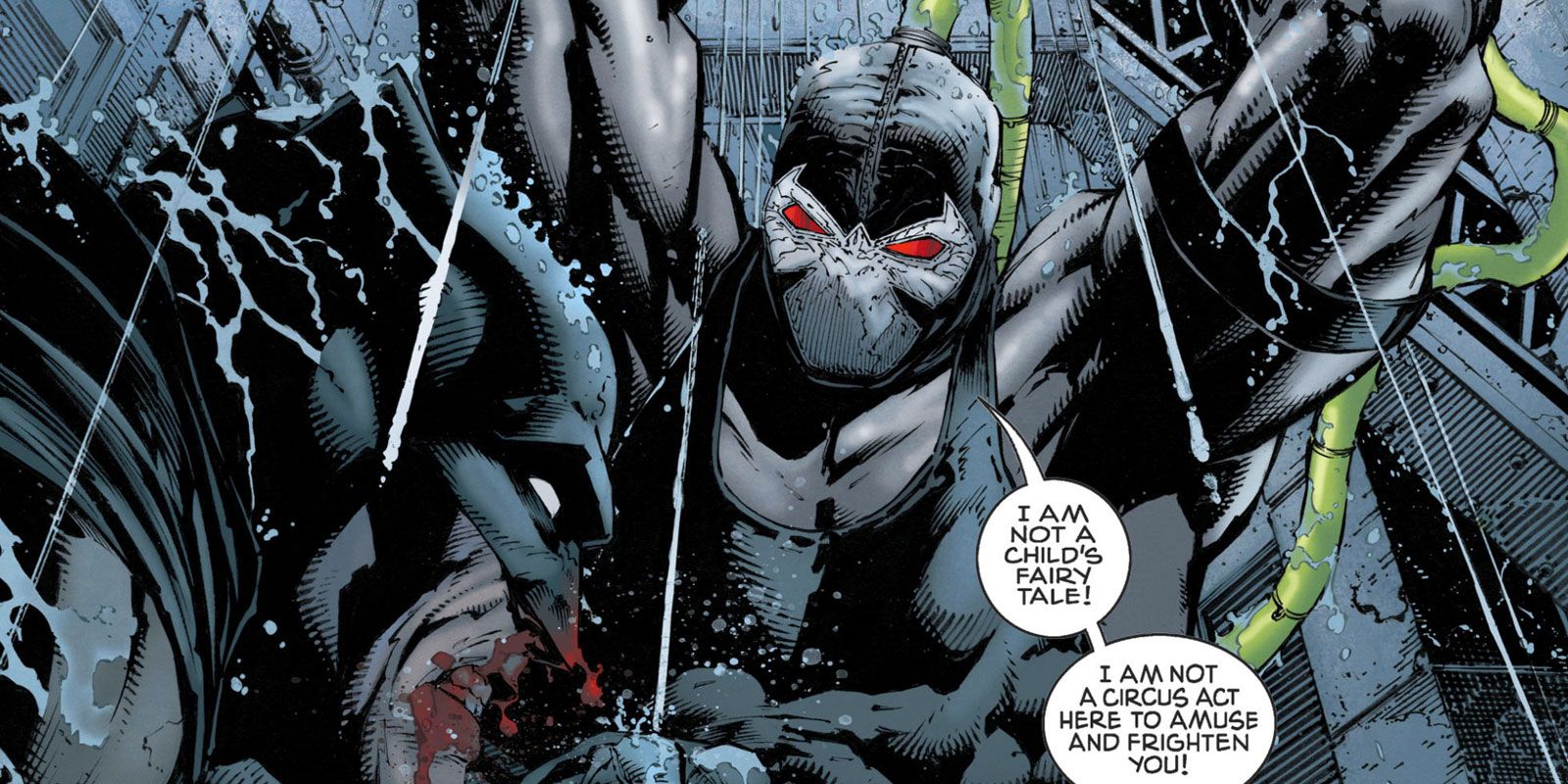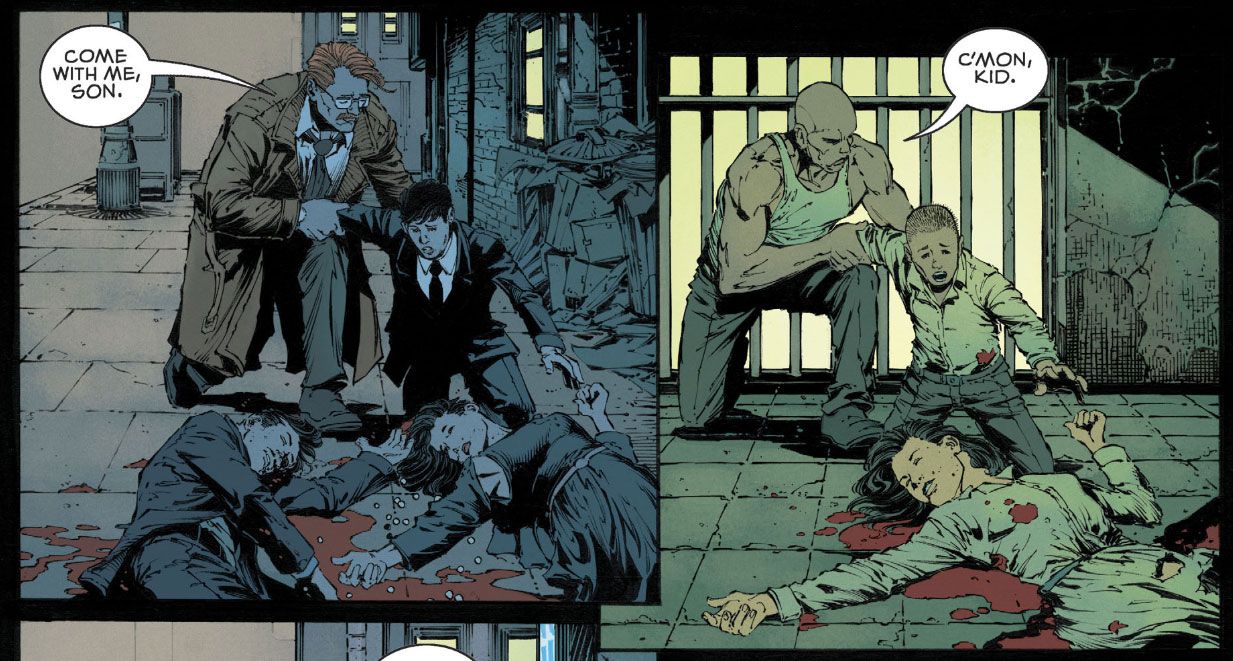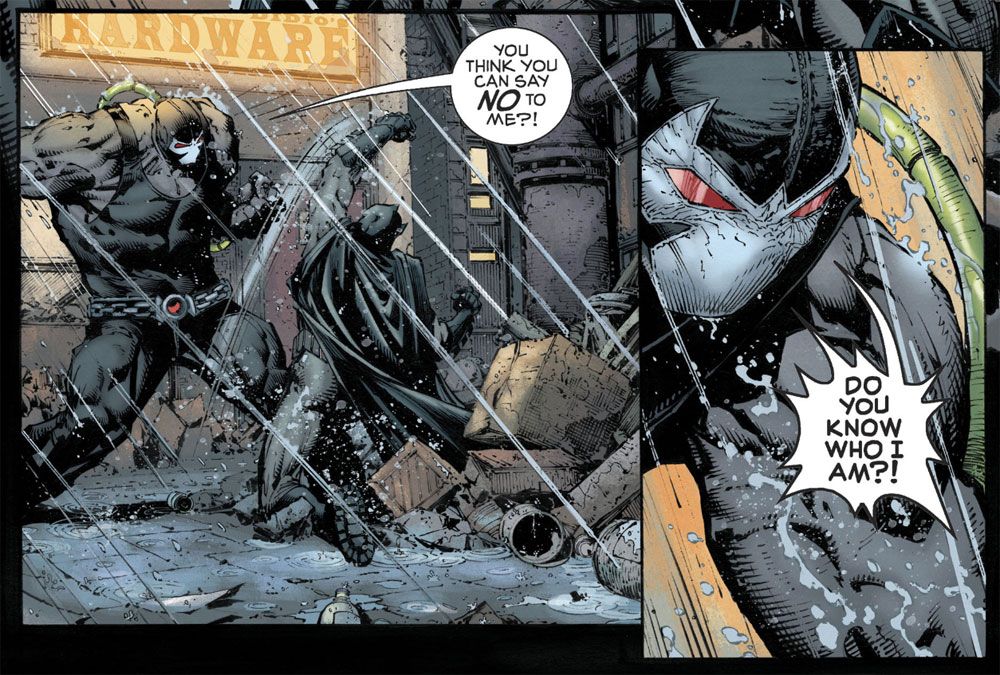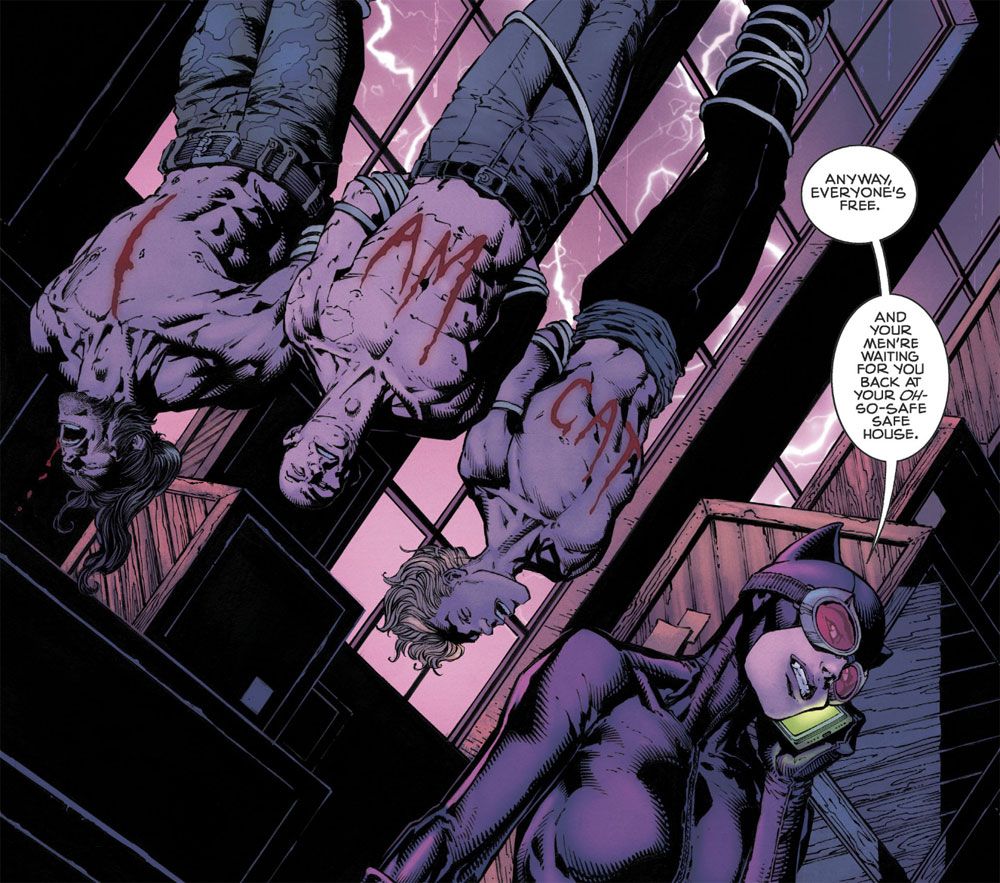SPOILER WARNING: The following article contains major spoilers for "Batman" #18 by Tom King and David Finch, on sale now.
With all of Batman's allies either seemingly taken out or otherwise unavailable, The Dark Knight once again comes face to face with the persistent Bane, this time on the rooftops of Gotham in "Batman" #18, as the formidable foe who once broke The Bat inches closer to his goal of reacquiring The Psycho Pirate from a fortified Arkham Asylum. Tom King and David Finch, in fact, convincingly make a case for Bane being Batman's most dangerous adversary, as Bats not only takes the beating of his life, but faces an enemy who's shown to be remarkably similar in many surprising ways. Perhaps even more intriguing, as Bane stands to elevate his status Batman's greatest nemesis, another foe is shown to be fully capable as one of his most useful allies.
RELATED: Bane Wages War On The Bat-Family in Batman #17 – But Who Survives?
Did Bane Kill His Own Mother When He Was A Child?
Interspersed throughout the battle are flashbacks to both combatants' dark and unfortunate histories, starting with the moments of their greatest respective losses. Bruce's, as half the planet knows, begins with the murder of his parents right in front of him when he was a boy; Bane's starts off with the murder of his own mother within the walls of Santa Prisca. Bane is known to have spent his childhood in prison to serve the sentence of his deceased father, but less is known about his mother. Her bloodied body is seen lying on the prison floor, presumably murdered, with the young boy understandably traumatized, just as Bruce was when his own mother and father were slain.
King and Finch are clearly drawing similarities between the two characters with radically disparate backgrounds, and part of that disparity could be rooted in an implication that can be drawn from that scene: did young Bane merely witness his mother's murder, or did he actually commit it? The character's origin has shown that he killed as a young child, and the blood on his clothing here strongly supports that his mother may have been one of his early victims, or perhaps even his first. This polarization also belies the general similarities of the two characters' histories, while highlighting the stark differences that sent the two down opposing paths.
Bane Just Might Officially Be Batman's New Arch-Enemy
The parallels continue throughout the issue, punctuated by diametrically opposed results from emotionally similar scenarios. An orphaned Bruce is surrounded by comfort and consolation from father figures such as Jim Gordon and Alfred, for example, while young Bane is cast into the pits of the prison by his fellow prisoners who don't want the burden of a child in their midst. As young adults, Bruce's loss turns into a resolve to wage war on criminals like the ones who victimized his family, while Bane's turns to the ultimate motivation to dominate criminal society. Finch's layouts highlight the similarities that both boys unknowingly shared over the years, while King's script focus on the contrasts, and the exact opposite outcomes.
Almost since Batman's inception, The Joker has long been commonly acknowledged to be Batman's definitive arch-foe, by way of the surface-level dissimilarities between the two adversaries. Batman's dark, serious, shadowy knight going up against The Joker's comedic, whimsical, garish clown has been the seed of dozens of stories over the course of nearly eight decades. King, however, makes a case for Bane supplanting The Joker's role, by examining Batman and Bane's commonalities as much as their differences, establishing a far deeper psychological yin and yang that makes Bane into a natural and better-defined kind of ultimate nemesis, rather than a manufactured one.
While the Joker's spot as one of Batman's most prolific and notorious villains likely remains secure, Bane now stands poised to rocket straight to the top, in a comparatively much shorter period of time. Bane himself certainly seems to think so – when he offers Batman's captured allies a safe return in exchange for handing over The Psycho Pirate, Batman's refusal sends him into an entitlement-fueled tizzy. The villain clearly puts himself in a higher regard than Batman's other foes, and collectively maligns them within his self-proclamation of greatness. "Do you know who I am?!" stands to become Bane's most infamous quote.
Batman's Most Important New Ally Isn't A Robin, Or Even A Sidekick
Batman's refusal of Bane's offer leads to a tantrum-infused beatdown of The Dark Knight, and while it's not one on the level of Bane's iconic back-breaking battle from the "Knightfall" era, its brutality only cements Bane's case for an elevation of rank in Batman's rogues' gallery. Leaving Batman a demolished wreck in his wake, Bane makes his way to Arkham, radioing his henchmen to kill the captured Gordon, Duke Thomas, Bronze Tiger and Catwoman. But the voice who radios back isn't that of any of his goons – instead, it's that of Selina Kyle herself, who has not only broken free (via methods unknown) and freed the other three captives, but also dispatched Bird and Bane's other two henchmen.
Selina, knowingly or otherwise, engages in a bit of revenge fantasy on behalf of the three Robins left hung for dead by Bane in the Batcave in the shocking conclusion of "Batman" #16. The issue concludes with the three stoolies also found hanging, this time upside down in Bane's own safe house (which turns out to be no more safe than Batman's own Batcave was two issues ago). Their predicament is courtesy of Selina, with her own take on Bane's "I Am Bane" message graffitied across the torsos of her three new victims. Selina reveals to Bane that this was all part of plan put together in a joint effort between Catwoman and Batman.
The scene goes a long way towards furthering the field relationship between Bruce and Selina, one that was established by King in the preceding "I Am Suicide" storyline and taken to a more personal level in the two-part "Rooftops" interlude. Just as Duke is being groomed as an operative outside of the Bat-family, Selina is seemingly being prepped for a similar role, enhanced by the closer personal dynamic established between the two. Clearly, Bruce's trust in Selina could be rooted in a blossoming relationship that involves other kinds of rooftop shenanigans.
RELATED: Batman #16 Is Uncharacteristically Funny – And It Works Wonderfully
Batman doesn't seem to be in any shape to even stand up, let alone face Bane again anytime soon, so it just might be Catwoman's turn as Bane forces his way into Arkham. Readers might find out in part four of "I Am Bane" in "Batman" #19, on sale March 15.




